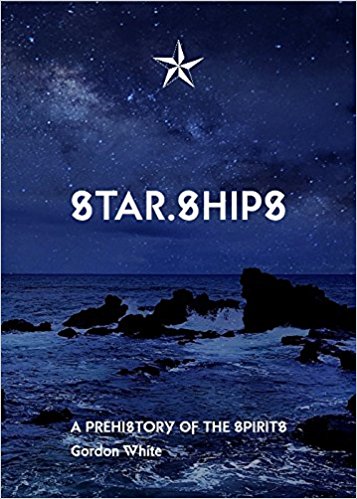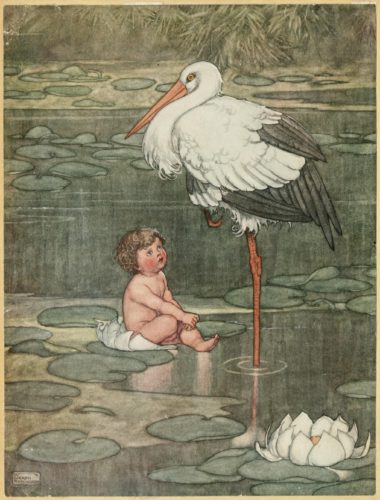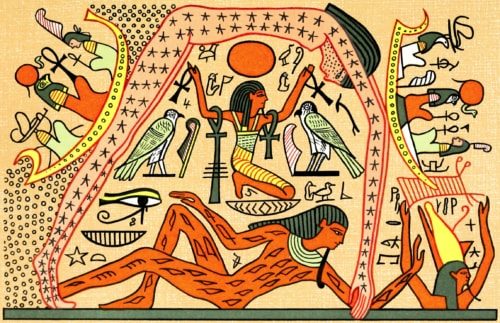
Gordon White’s Star.Ships: A Prehistory of the Spirits, published by Scarlet Imprint in 2016, challenges the overly materialistic shortsightedness of both academic and “ancient aliens” theories regarding the development of human “civilization” during the late Paleolithic and early Neolithic periods. As the subtitle of the book suggests, White offers a spirit-working chaos magician’s perspective on the question of of “civilization” and its relationship to spirits and star lore, utilizing data from a wide swathe of scientific disciplines. “Instead of measuring a civilisation by its density of sprockets, what happens  when we consider civilisation to be a collection of values, thoughts, mythologies?” White asks, “What happens when we count up the non-physical sprockets?” (9)
when we consider civilisation to be a collection of values, thoughts, mythologies?” White asks, “What happens when we count up the non-physical sprockets?” (9)
White begins his book with a chapter on the limitations of scientific answers to this question, ranging from methodological problems such as the non-publication of findings due to political or careerist reasons, the deliberate limitation of access to evidence, and blatant fraud, to thornier issues of interpretation: the inevitable gap between facts and interpretation, confirmation bias towards exclusively materialist explanations when dealing with spiritual or mythic subjects, and racist assumptions about “primitive” cultures “progressing” into “civilizations.” He declares:
Science excels at generating facts, but magic has been generating meaning for perhaps fifty thousand years […] We are wholly justified in turning the question on its head and asking the scientists what it is they think they are doing swimming in our pool in the first place. (14)
Göbekli Tepe
Having fired these opening shots, White turns to the archaeological site of Göbekli Tepe in Southeastern Turkey, discovered by Dr. Klaus Schmidt in 1994. Göbekli Tepe consists of numerous circular enclosures comprised of carved stone pillars, and is at least 12,000 years old, predating agriculture, cities, and the other usual defining features of “civilization.” Thus, its simple existence demolishes the theory that temples are built only when agricultural surplus allows the establishment of cities and priestly castes: the first enclosures at Göbekli Tepe were built by gatherer-hunters.
Furthermore, each enclosure was deliberately buried around the time the next was built, and southern-facing entrances of the enclosures each seem to align at dawn with the constellation Orion—each successive enclosure’s entrance drifts further to the east, as is to be expected due to precession. The relief carvings are mostly of various animals such as foxes, snakes, boars, vultures, and cranes, while the central T-shaped pillars are shaped like headless humanoids.
Göbekli Tepe was clearly a major trading hub, with obsidian from up to 300 miles away being found at the site. There is no evidence of permanent settlement at the site, but there is evidence of feasting and very possibly the consumption of beer brewed from wild grains. The central pillars “hum” when struck with one’s hand, and fragments of human bone raise the possibility of excarnation “sky burials.” In short, there is strong evidence for the theory that Göbekli Tepe was not merely constructed and used by a single band or tribe, but “an episodic gathering place for nearby (and possibly quite distant) tribes sharing the same cosmology” (37).

Göbekli Tepe [Teomancimit].
Shared Cosmologies
The idea of shared cosmologies underpins Star.Ships. White notes that if similarities between different world mythologies were purely the result of neurology, then the distribution of those similar beliefs would be random, just like physical variations. However, the motifs that White follows are not randomly distributed, which is hardly surprising given that belief systems spread culturally rather than biologically.
White draws heavily upon the work of the Indologist E. J. Michael Witzel, author of The Origins of the World’s Mythologies. Dr. Witzel suggests that by comparing similarities in world mythologies to the movement of human populations, tracked through archaeological and genetic data, some of these similarities may be traced back to common ancestors. Dr. Witzel broadly categorizes world mythology into two groups, which he names after the super-continents that formed when Pangaea broke apart: Gondwanan and Laurasian. Gondwanan mythologies, which are older, are described as a “forest of stories” without a creation or destruction story, whereas Laurasian mythologies are characterized by a more linear narrative including the creation of the world, the separation of heaven and earth, the killing of a dragon, a golden age and a flood, and the eventual destruction of the world.
According to Dr. Witzel’s framework, Gondwanan mythologies are around 65,000 years old and are largely found in sub-Saharan Africa, Australia, and New Guinea (which were both early destinations when humans first migrated out of Africa), while Laurasian mythologies are around 40,000 years old and are common in Eurasia, North America, and North Africa. From these two families, Dr. Witzel also tentatively reconstructs the broad brushstrokes what he calls Pan-Gaean mythology, the original African ancestor of both families of mythologies. Common themes within Gondwanan and hypothetical Pan-Gaean mythology include a distant high god, a trickster teaching culture to humanity, and an Otherworldly “well of souls.” The importance of serpents, local spirits, and stone worship are other likely features.

A Gondwanan “well of souls?” Illustration in Hans Andersen’s Fairy Tales. Public domain.
Using Dr. Witzel’s model, White mocks the folly of searching for the physical location of Noah’s srk or Atlantis or the garden of Eden: these are clearly just recent iterations of much older mythological motifs. White also discusses Dr. Witzel’s distinction between “grandmother stories” and “grandfather stories:” the latter are the official narratives of Laurasian cultures, whereas the former are survivals of Gondwanan themes found within fairy tales and folklore. For example, the German story of the stork delivering babies is similar to the “well of souls” motif found within Gondwanan mythologies.
White applies the “grandmother” framework to the western magical tradition:
While Laurasia may be the ‘containing narrative’ for Western magic, many of its spirits are at least Gondwanan and potentially Pan-Gaean […] ‘true’ Western magic, devoid of its much, much later onboarding of Neoplatonism, is a practical application of a Pan-Gaean worldview: God may exist but its existence is materially irrelevant; the Trickster/Devil is the gatekeeper and lord of culture; and it is recourse to local spirits and the dead by way of sacrifice that is the most commonly performed action. (59-60)
Sic Itur Ad Astra
In subsequent chapters, White traces the non-random distribution of flood myths to Southeast Asia (where more than half of the world’s flood stories originate) and to cataclysmic climatic shifts at the end of the Ice Age, examines Polynesia’s sidereal knowledge, engages in a re-calibration of the dating of the Vedas in conjunction with Harappan archaeology (which then has implications for the antiquity of the astrological information found in the Rig Veda), and brings Sumeria back “into alignment with the geology, genetics, and astrotheology of contemporaneous cultures” in order to “permanently banish the aliens back into the sky, and [free] up modern esotericists to look anew at Sumerian star lore and what it might mean for contemporary practice” (149).
Across this vast array of cultures, White finds certain common themes, including the importance of Orion, the Pleiades, and Taurus, a lunar calendar, alignment of buildings with constellations, kingship descending from the stars and the requirement of the king to return to the stars for his own immortality and for the benefit of his people, and the near-simultaneous appearance of this magical “proto-Hermetic” technology in multiple geographically disparate locations.
He devotes an entire chapter to Egypt, attacking the idea that the pyramids were constructed within the lifetimes of individual pharaohs for the exclusive purpose of serving as tombs and instead arguing for a much more complex inter-generational ritual function related to kingship, immortality, and the stars.
From Egypt, White follows the multiple vectors of transmission of Hermeticism into the western magical tradition, from the the Greek Magical Papyri and the Alexandrian diasporas fleeing Christian and Muslim rule, through Moorish Spain, Constantinople, Venice, alchemy, Sufism, the grimoire tradition, and the fascinating city of Harran, located only a few miles away from the long-buried site of Göbekli Tepe. The Harranians left Alexandria when the Christians gained power, and under Muslim rule, adopted the guise of being “Sabians,” one of the three “Peoples of the Book” mentioned in the Quran: “for their book, they chose the Hermetic texts, and for their prophets, they chose Agathodaimon and Hermes, adding that Hermes is also ‘Idris,’ the Muslim name for Enoch.” (233)
White also traces continuity (which he distinguishes from the idea of a pure “survival”) from Göbekli Tepe and Laurasian cosmology to the Yezidis, noting that the peacock is associated in Vedic mythology with the Pleiades.
Non-Human Logic
As the story reaches the modern day, White allows for the possibility that extraterrestrials may have physically visited the Earth at some point, but finds that the theory that such beings were responsible for human civilization to remain “hamstrung by materialism.” (247) White posits a “capricious, sporadic spirit contact” model, reminding magicians and spirit-workers that this is our area of expertise:
Magicians have personal experience of non-human logic; what it feels like, how it manifests in life and culture, and so on. It is characterised by atemporality, high levels of coincidence, repetition of motif and symbol in entirely unrelated contexts, and a quasi-fractal capacity to look weirdly resonant at whatever level you observe the phenomenon, from the micro to the macro. (248)
Sound familiar to any of the readers of the Wild Hunt? Paradoxically, “atemporality” is one of the characteristics of gods and spirits. Thus, to follow the footprints of the spirits through linear (Laurasian) time, we must look further and further back, and expand our perspective as much as possible. This is what White does with Star.Ships.
Star.Ships turns the racist and materialist narrative of progress on its head. Long before Leviathan, humanity had many millennia of complex relationships with the spirits and the stars, as expressed in physical form at Göbekli Tepe and many other sites. Many cultures have never ceased to cultivate those relationships. As Leviathan dies, it is time for those trapped within its corpse to come out under the stars once again. Let new Göbekli Tepes arise!

Geb and Nut [The Gods of the Egyptians Vol. II, public domain]
* * *
The views and opinions expressed by our diverse panel of columnists and guest writers represent the many diverging perspectives held within the global Pagan, Heathen and polytheist communities, but do not necessarily reflect the views of The Wild Hunt Inc. or its management.
The Wild Hunt is not responsible for links to external content.
To join a conversation on this post:
Visit our The Wild Hunt subreddit! Point your favorite browser to https://www.reddit.com/r/The_Wild_Hunt_News/, then click “JOIN”. Make sure to click the bell, too, to be notified of new articles posted to our subreddit.
Pingback: TWH: Review of Star.Ships | Heathen Chinese